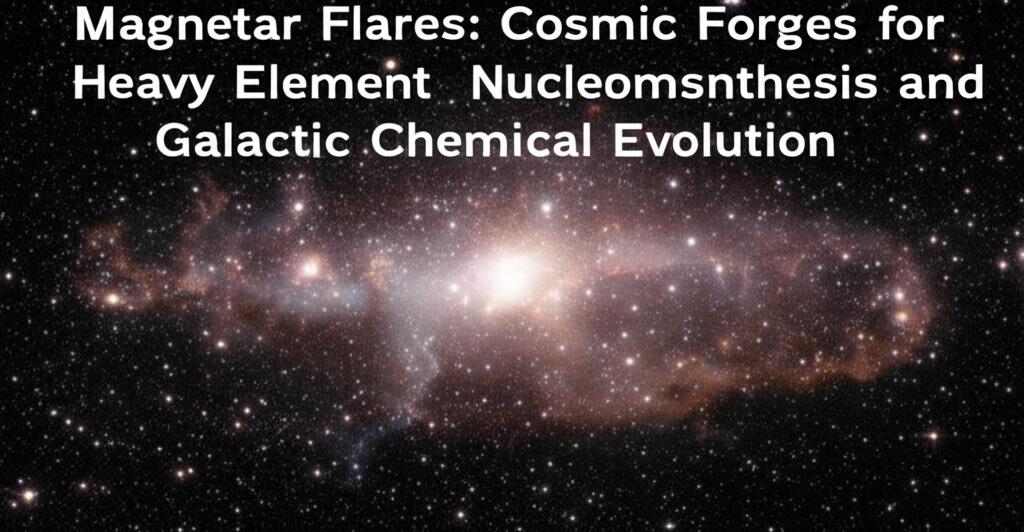Recent discoveries have illuminated the significant role that magnetar flares play in the creation of heavy elements and their subsequent distribution throughout the galaxy, a process that fundamentally shapes galactic chemical evolution. Magnetars, a type of neutron star with extraordinarily powerful magnetic fields, trillions of times stronger than Earth's, are now understood to be key cosmic forges.
For a long time, the precise origins of the universe's heaviest elements—those heavier than iron, such as gold, platinum, and uranium—remained a persistent puzzle. While it was known that lighter elements like hydrogen and helium were formed in the Big Bang, and elements up to iron are synthesized through nuclear fusion in stellar cores, the creation of heavier elements requires more extreme conditions. The "r-process," or rapid neutron capture process, was theorized to occur in violent cosmic events like supernovae or the mergers of neutron stars. In 2017, the observation of a neutron star merger provided the first direct evidence of the r-process in action.
However, neutron star mergers alone appear insufficient to account for the observed abundance of heavy elements, particularly in the early universe. This is where magnetar flares come into the picture. These cataclysmic events, triggered by "starquakes" that fracture the magnetar's crust, release enormous bursts of energy and radiation. Recent studies, leveraging archival data from telescopes like NASA's and the European Space Agency's (ESA), have provided compelling evidence that these giant flares create the necessary conditions for r-process nucleosynthesis.
One notable event, a magnetar flare from SGR 1806–20 observed in 2004, has been re-analyzed. Researchers found that the flare's aftermath included a gamma-ray glow consistent with the radioactive decay of freshly synthesized heavy r-process elements. It's estimated that a single such flare can eject a significant quantity of heavy elements, potentially equivalent to the mass of Mars or many moons. These calculations suggest that magnetar giant flares could be responsible for up to 10% of the total abundance of elements heavier than iron in our galaxy.
This discovery has profound implications for our understanding of galactic chemical evolution. Because magnetars could have existed relatively early in the universe's history, their flares could account for the presence of heavy elements in young galaxies, a phenomenon that neutron star mergers, occurring later in cosmic time, couldn't fully explain. The material ejected from these flares, rich in newly forged heavy elements, gets mixed into the interstellar medium. This material then becomes incorporated into subsequent generations of stars and planets, influencing their composition and, potentially, the habitability of exoplanetary systems. The supernova explosions that precede the formation of magnetars also contribute to this cosmic recycling by producing elements like oxygen, carbon, and iron, which are crucial for more complex celestial processes.
Future missions, such as NASA's Compton Spectrometer and Imager (COSI), expected to launch in 2027, will further investigate these energetic phenomena. COSI aims to identify individual elements created in magnetar flares, offering new insights into the origin and distribution of heavy elements throughout the cosmos. While magnetar flares may account for a portion of these heavy elements, the origin of the remaining majority is still an active area of research, with the possibility of other, yet undiscovered, cosmic forges.

